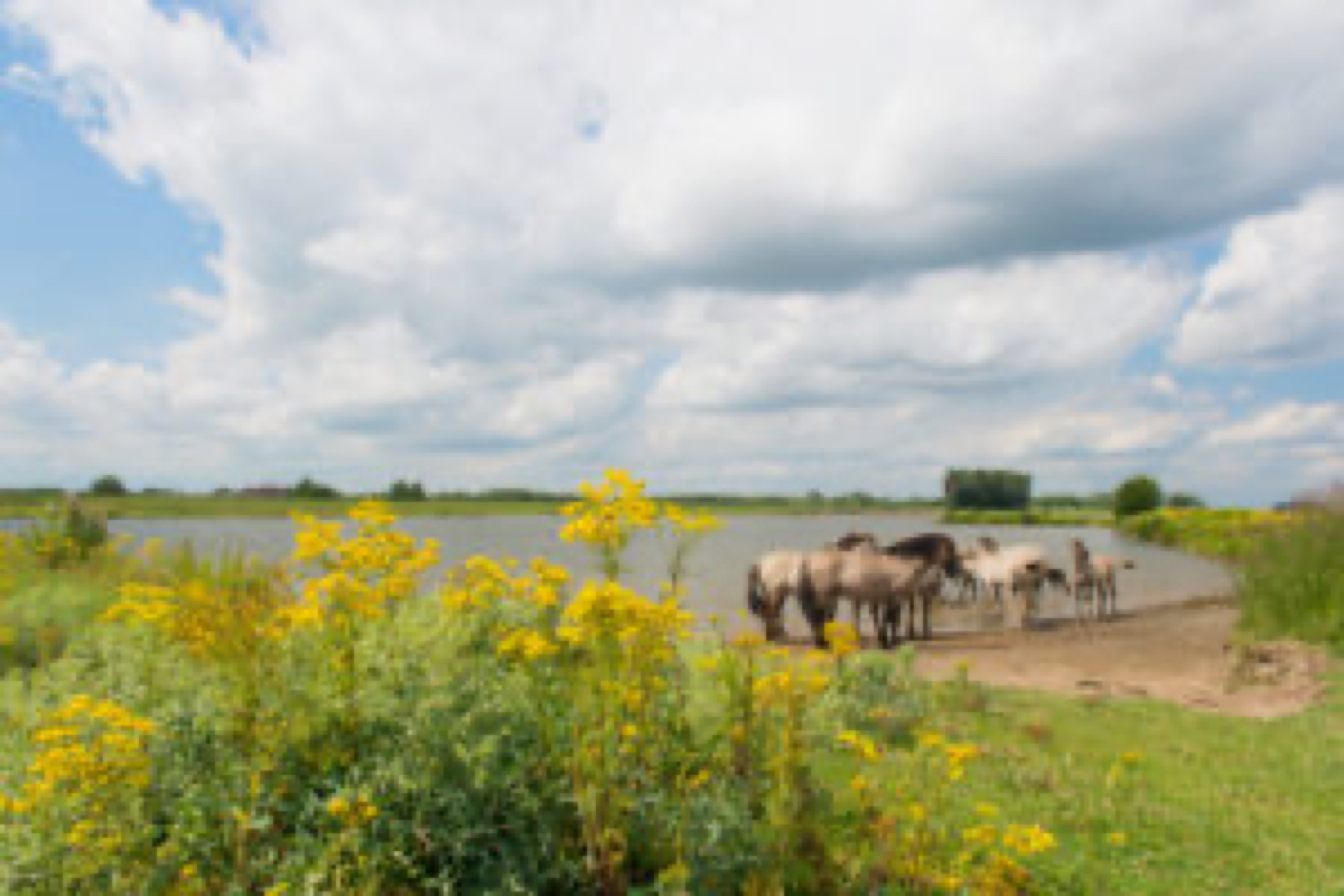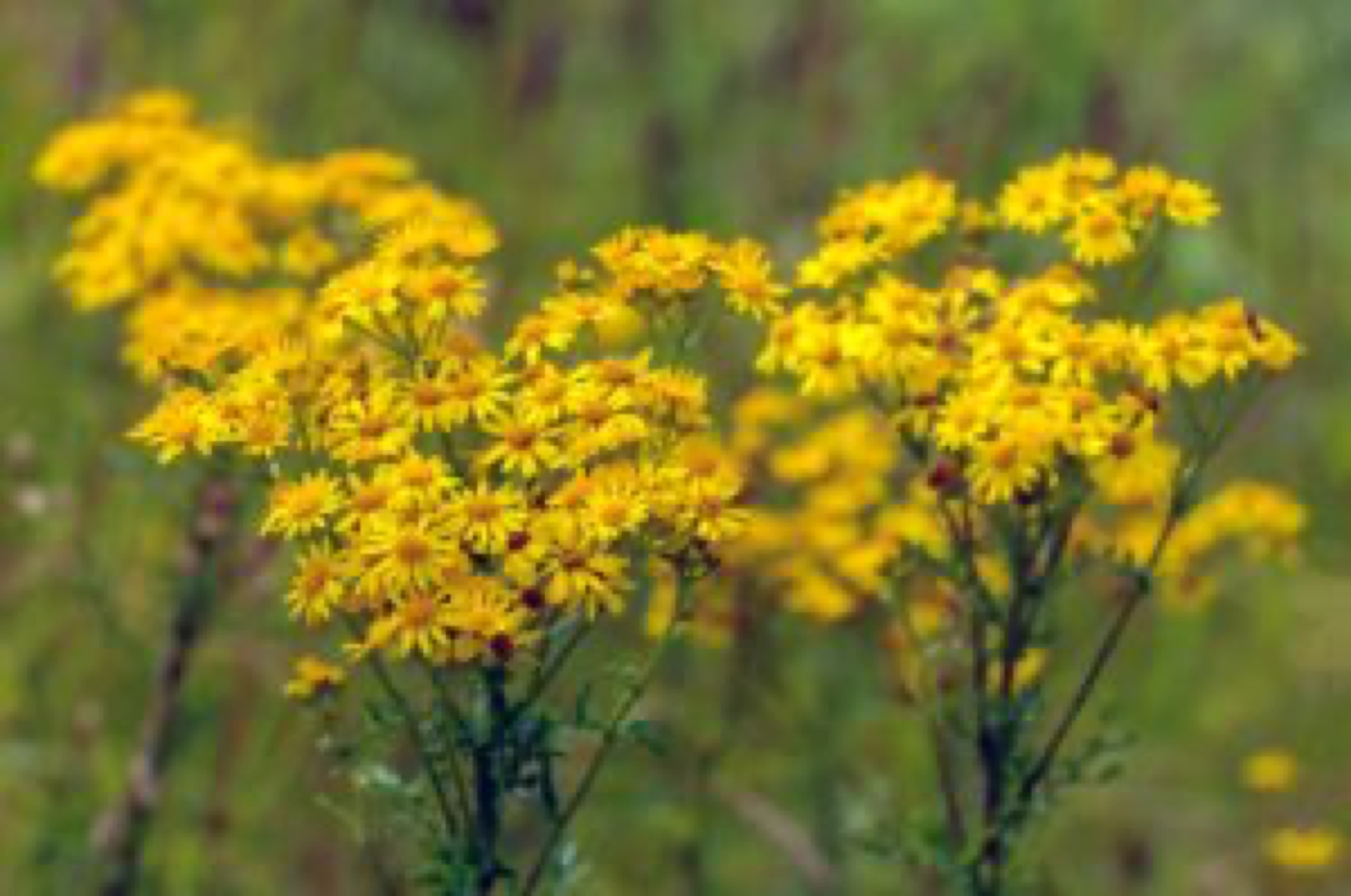What is Ragwort (or Tansy Ragwort) and is it a Helpful or Harmful Plant?
by Jane Chitty
Like many debates today, the story of Ragwort has two sides.
Common ragwort (Senecio jacobaea) is a poisonous plant that is becoming increasingly common in the UK, seen regularly growing along roadsides, on wasteground and in areas of poor land management.
Unfortunately, ragwort can spread into fields and farmland.
While ragwort is a wild flower native to Eurasia, it is now found throughout the world including parts of the USA where it is generally known as tansy ragwort, or tansyweed. Ragwort is unrelated to the true tansy and any resemblance is superficial. Flowering ragwort can be identified between May and October by its mass of bright sunshine yellow daisy-like flowers. A mature plant can grow as tall as 6 feet high. It is harder to identify young plants and those gone to seed.
To some people, ragwort is a poison while to others it is a help to wildlife.
What are the problems with ragwort?
Horses, ponies, donkeys and mules as well as cattle are more at risk from ragwort poisoning than other livestock; with young animals being more in danger. Poisoning can occur at any time of the year, generally having a cumulative effect. A very small intake over a long period of time can be just as damaging as a large intake over a short period. Over time, liver cells are destroyed resulting in liver failure. Such damage may go unnoticed for months or years before being detected.
Despite its bitter taste, the animals will eat ragwort especially during times of sparsity, overstocking or poor land management. Ragwort can be caught up in hay or dried grass when it can be difficult to spot. Ideally, ragwort should be removed during spring and summer before it has the chance to seed. Horse lovers in the UK are adamant about the dangers of ragwort to their animals and constantly publicize such dangers.

What are the clinical signs of ragwort poisoning?
Symptoms first seen may include:- Depression
- Loss of condition/poor appetite
- Diarrhoea or constipation
- Photosensitivity (sunburn) affecting unpigmented (pink) skin
- A possible jaundiced appearance
- Strange nervous behaviours
- Restless/aimless and uncoordinated movements/repetitive circling
- Possible blindness
- Head pressing against solid objects
- Abnormal gait and stance
- Haemorrhage
- Loss of consciousness.
What are the helpful things about ragwort?
It is not all doom and gloom. The National Trust confirm that they take a balanced view and recognise that, while ragwort does need controlling, it certainly should not be eradicated.
The National Trust has this to say:
“As a native plant, it is protected by the Wildlife and Countryside Act (1981) which makes it illegal to uproot Ragwort without proper cause.
With the decline in flowering plant diversity in the countryside, ragwort has assumed an increasing importance as a source of food for generalist nectar feeding insects in the late summer. Ragwort is the food plant of at least 77 species of foliage eating insects, including five “Red Data Book” and eight “nationally scarce” species. The most well-known is the cinnabar moth (Tyria jacobaea). At least 30 species of insects are linked to ragworts, the great majority of which are confined to Common Ragwort or the closely related Hoary Ragwort.
Many species of insects may be seen on ragwort flowers. Some use them as territory markers or as vantage points to find passing prey or mates. Some species prey on the other insect visitors to the flowers, some are more closely associated with the ragwort flowers, taking ragwort pollen, and more than 170 species have been recorded feeding on ragwort nectar. In late summer, if you take the time to look closely at a head of ragwort flowers, you will see it tremble and hear it buzz with the activity of the life it is supporting.
Such an important source of insects is exploited by birds and mammals, thereby benefiting the wider ecosystem.”
SOURCES:
Chojkier M. Hepatic sinusoidal-obstruction syndrome: toxicity of pyrrolizidine alkaloids. J Hepatol 2003;39:437-46. View abstract.
Food and Drug Administration. FDA Advises Dietary Supplement Manufacturers to Remove Comfrey Products From the Market. July 6, 2001. Available at: https://www.cfsan.fda.gov/~dms/dspltr06.html.
Roeder E. Medicinal plants in Europe containing pyrrolizidine alkaloids. Pharmazie 1995;50:83-98.
Written by Jane Chitty

Jane writes for Healing Natural Oils, a producer and retailer of high-quality, all-natural treatments for a variety of conditions as well as a range of beauty products. Apart from writing about those various conditions, she also covers general health, environmental and other subjects of interest. She has lived in Kenya as well as Cape Town, South Africa and spent time in San Diego, USA. She now lives in Somerset, England with regular visits from her far-flung children and grandchildren. She is a keen gardener and enjoys growing fresh fruit and vegetables with her husband on their joint allotment. As a result, there is something available to use in the kitchen virtually all year round. Her regular posts can be found on our blog.
Browse
Share
Recent Posts
- House Plants for the Bedroom to Help you Sleep More Soundly
- Top Tips for a Quick Spring Clean in Your Home
- Got Warts? Here’s What to Do!
- Is It Safe to Store Food in Plastic Containers?
- Do You Suffer from Ingrown Toenails?
Follow Us
Tagged
- acne
- Age Spots
- Arthritis
- Athletes foot
- Babies
- beard
- beauty
- Books
- Candida
- Children's Health
- Cracked heels
- Dental Care
- Diets
- Diseases
- Doctors
- Drugs
- Eczema
- Environment
- Essential oils
- Exercise
- face care
- Guides
- Hair care
- headaches
- Headaches & Migraines
- Health
- hemorrhoids
- How To
- Inflammation
- Insomnia
- Interviews
- Law
- Men's Health
- migraines
- moles
- nail fungus
- Natural remedies
- New Moms
- Nutrition
- oily skin
- Parents
- Pets
- Pregnancy
- psoriasis
- rosacea
- scars
- Sickness
- skin care
- Skin Conditions
- Skin Tags
- spider veins
- stretch marks
- Technology
- Top 10
- Vaccines
- Varicose Veins
- Vitamin D
- Warts
- Weight Loss
- Women's Health
- wrinkles



